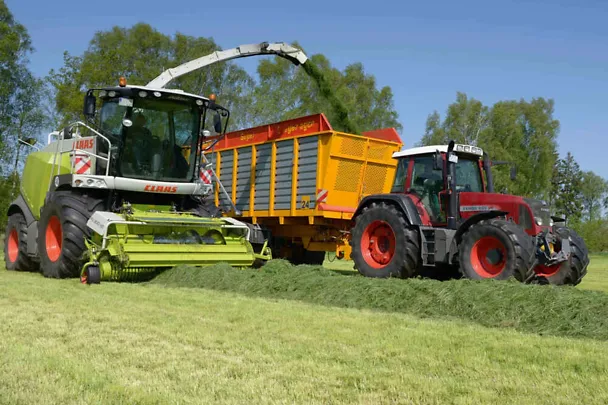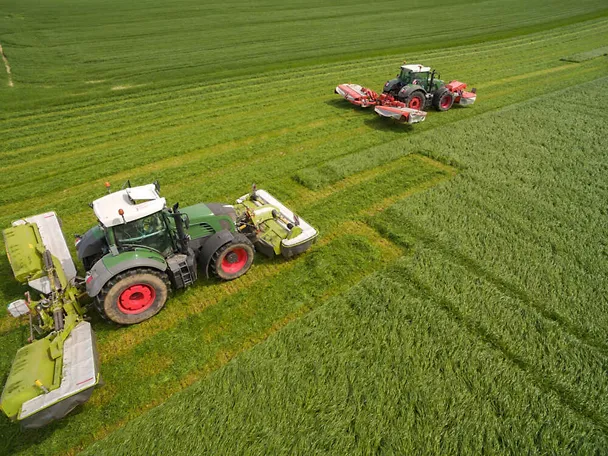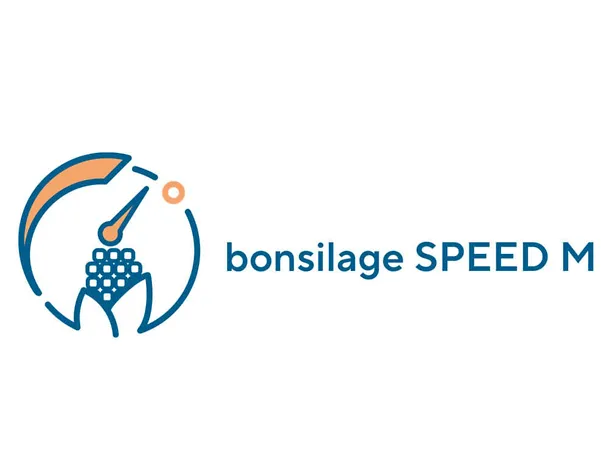Trial results confirm: bonsilage SPEED G ensiles measurably faster

© Volker Hämmerling
Grass silage treated with bonsilage SPEED G convinces already after just 14 days of silage maturation with high aerobic stability and excellent suppression of mould growth. The high performance of bonsilage SPEED G has been confirmed by trials conducted by the Schleswig-Holstein Chamber of Agriculture and the Bavarian State Institute for Agriculture (LfL - Animal Nutrition, Grub, 2nd cut 2019).
There are many reasons why high-quality grass silage can spoil. In addition to using silage technology that is appropriate for the crop, it is crucial to control the fermentation acids produced. This is exactly where bonsilage SPEED G comes in. After just 14 days, this unique silage additive produces enough acetic acid to create stable, high-quality grass silage. During the subsequent silage storage period, propionic acids are also formed in addition to acetic acid, thereby preventing the development of fermentation pests in the long term.
Longer stability of grass silage
The results of the Schleswig-Holstein Chamber of Agriculture prove the high aerobic stability of grass silage treated with bonsilage SPEED G. In this silo laboratory test, grass silage treated with bonsilage SPEED G and untreated grass silage were opened after 14 and 28 days of silo maturation. The untreated control showed significant post-heating as early as the fourth and fifth day after opening. The grass silage treated with bonsilage SPEED G remained stable until the seventh and eleventh day after opening (see Fig. 1).
New results from the LfL Grub
In the LfL trial, an untreated control and two silage additives were evaluated in multiple repetitions according to the high-quality DLG standards. Silage additive variant I was a silage additive with DLG quality seal of effectiveness (WR) 2 for improving aerobic stability. Silage additive variant II was the biological silage additive bonsilage SPEED G.
The result: while the untreated control always showed the lowest aerobic stability, silage additive variant I (DLG-WR 2) was in the middle of the range. bonsilage SPEED G, with its lactic acid bacteria strain L. diolivorans, was able to form large quantities of yeast and mould-inhibiting acetic acid after only a short silage maturation period, thus prolonging stability after opening in storage variants A, B and C, although the control was also sufficiently stable after 49 days (see Fig. 2).
Mould inhibition by bonsilage SPEED G
If the cuts are early, the material is more prone to mould formation due to air entrapment and the generally poorer compactability. Trials by the LfL with crude fibre contents of more than 30% in the DM underline this.
In order to test the influence of the silage additives on mould formation in such material, a visual mould assessment was carried out on the silage that had been ensiled for 49 days and then stored for a further 13 days under constant exposure to air.
The result: both the untreated silage and the silage treated with silage additive variant I (DLG-WR 2) showed more than 50% mould visually, while the bonsilage SPEED G samples were all free of mould (see Fig. 3).



